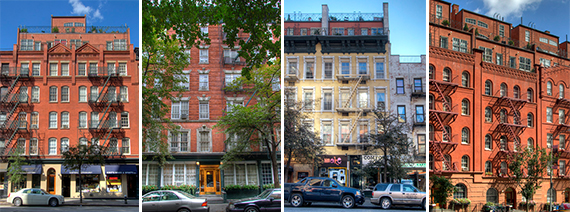Trending
Meet one of NYC’s quietest landlord dynasties
Over at least three generations, the Eberharts have amassed an enviable UES portfolio

The long-awaited completion of the Second Avenue subway is expected to lead to rising rents on the Upper East Side – a headache for some tenants, but a boon for the area’s landlords.
While some of the landlords poised to benefit are household names such as Kushner Companies and Glenwood Management, one lesser-known group that will likely cash in is Eberhart Brothers. This obscure family business, which has operated from an office at 82nd Street for over 50 years, owns at least 50 rental properties in the city, many of which are clustered between First and Second Avenues on the Upper East Side. The company’s average building contains fewer than 20 units and draws little attention in a city filled with skyscrapers and multimillion dollar properties.
But that’s exactly how the Eberharts like it. “They’re probably the most unavailable real estate family out there,” said one seasoned commercial broker familiar with the company.
The company’s president, David F. Eberhart, declined to comment for this story but emphasized that the company was a family business. The Eberharts’ interest in New York’s property market dates at least as far back as Eberhart’s grandfather, Frank, who served as the president of the House and Real Estate Owners’ Association of the Twelfth and Nineteenth wards.
In 1903, Frank Eberhart advocated for a Far East Side subway line similar to the one that could provide his family a windfall today. As a part of a real estate owners group lobbying for a subway to be constructed beneath First Avenue, he saw the Lexington Avenue subway proposal as “only a scheme to benefit the New York Central Railroad,” the New York Times reported at the time. Frank, of course, did not get his wish.
Frank died in 1917, and 10 years later, his sons, Frank and Walter, started Eberhart Brothers [TRDataCustom].
Because online city records for real estate only go back to 1966, the earliest record of the company’s activity comes from a short 1933 blurb in the Times stating that the company had consolidated mortgages to form first liens, totaling $33,000, on two five-story buildings on Second Avenue.
The company’s full holdings back then cannot be determined. But a 1935 fire that destroyed three of their East Side buildings must have been an early setback, as the fledgling firm was in the process of renovating vacant tenement buildings at the-then Popular Sutton Place On East 55th Street. The address, 550 East 55th Street, would today most likely be on the FDR Drive.
Years later, Eberhart Brothers again made the news for attempting to gentrify a once-downtrodden East Side neighborhood—Yorkville. In 1980, the company bought five buildings on 96th Street, renovated them, and rented them at increased prices.
“We’re shocked at the rents we got,” Frank Eberhart, David’s brother and at least the third Frank of the Eberhart real estate family, told the Times in 1983. “There are investment bankers living in those buildings.”
According to a TRD analysis of city records, Eberhart Brothers owns over 540,000 square feet of residential space in the city, including 1705 First Avenue and 316 East 92nd Street. The city lists the net operating income (NOI) of the two buildings for 2015 at $918,209 and $825,022, respectively, making them two of the most lucrative properties in Eberhart Brothers’ portfolio, which netted at least $19.3 million in 2015, Department of Finance records show. Total revenue from these buildings exceeded $28 million in 2015.
NOI on city records, though, does not factor in an owner’s debt service, so a more precise estimate of net cash flow is harder to come by. A person familiar with the company contested The Real Deal’s analysis of net income, stating that the actual number is far higher.
Eberhart Brothers’ website lists 60 addresses in the company’s portfolio, which would bring its total to just under 1,000 residential units, according to a person familiar with the company’s portfolio. The buildings would also increase the Eberhart Brothers’ total net income in 2015 to over $23 million and revenue to over $36 million. TRD could not confirm the company’s ownership of these buildings, some of which include co-op units.
With other family-owned companies cashing out on their portfolios, Eberhart Brothers may opt to do the same. In 2015, the Blackstone Group paid the Caiola family nearly $700 million for 25 buildings in Manhattan, and in April, investment firm Black Spruce Management purchased an $80 million, 14-building Chelsea portfolio from the Brock family.
At least one local broker thinks the subway has made the Eberthart portfolio a lot more attractive. “It used to be so hard to rent their apartments, and now it’s much easier,” said Princess Abigail Bacani, an agent with BOND New York.
A person familiar with the company’s strategy said that it had not sold anything for years and that it had no plans to do so in the future.
Adam Pincus contributed research.
(To see a list of Eberhart Brothers’ buildings in The Real Deal‘s TRData database, click here.)




